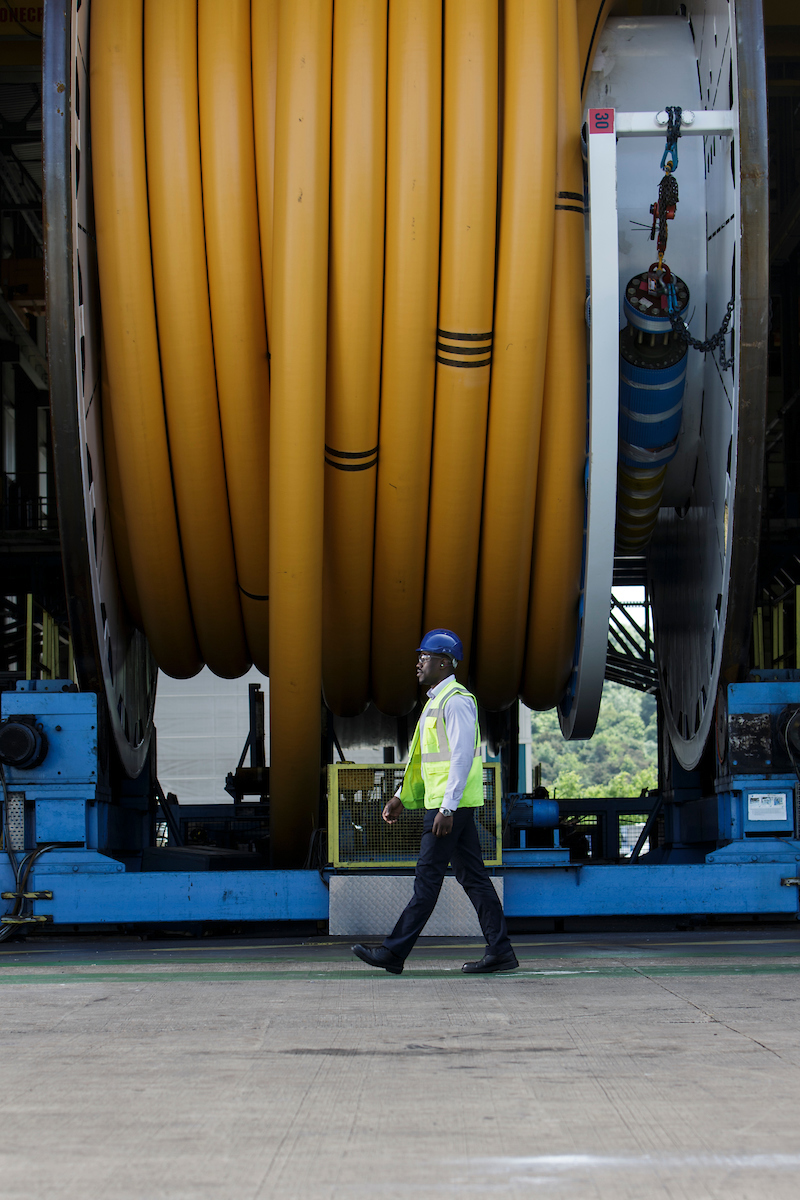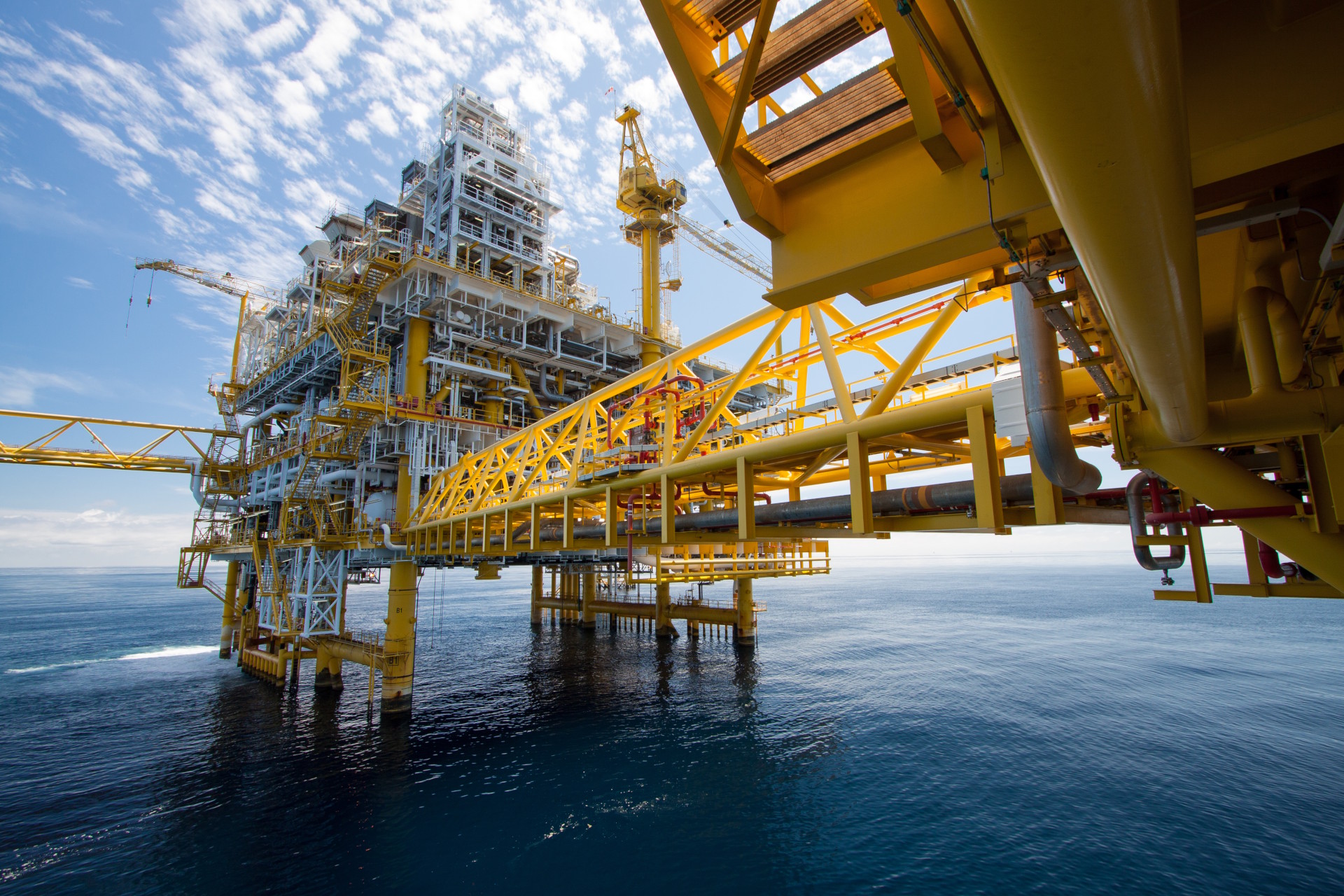The unsung heroes of energy networks, modern flexible pipe systems are faster to install and have better robustness than their rigid counterparts. Made of layered polymer and (stainless) steel layers, they offer high strength and corrosion resistance in tough environments.
By Joanne McIntyre, Stainless Steel World
Baker Hughes recently announced significant contracts with Petrobras to provide 77 km of flexible pipe systems to be deployed in Brazil’s pre-salt fields. The multi-year project includes risers and flowlines for hydrocarbon production and associated gas and water injection with support for equipment storage, maintenance and installation. With delivery scheduled to begin in mid-2026, the equipment will be utilised across Petrobras’ Búzios, Libra, Berbigão, Sururu and Sépia fields.
The company has been deeply involved in the development of Brazil’s offshore oil and gas fields for decades, and its localisation strategy contributes to the nation’s economy while strengthening its energy supply chain.
The company’s plant in Niteroi, Brazil, where these systems will be manufactured, is a major supplier of flexible pipe systems for the industry and employs hundreds of people in the state of Rio de Janeiro. Contracts were also awarded for 69.1 km of flexible pipe systems and associated services in the third quarter.
Flexible connectivity
In a 2023 interview, Domenico Di Giambattista Vice President, Flexible Pipe Systems (FPS) at Baker Hughes, explained that the pipe systems are critical to delivering energy to the world. “Flexible pipe systems are a range of different products, for different purposes,” says Di Giambattista, a mechanical engineer with a master’s in project management and a long career working in the energy industry.
“Whether it’s internal pressure, external pressure, permeation, axial tension, abrasion resistance or thermal insulation, these layers combine to deliver a system of products that enable the flow of liquid and gas. The energy world needs connection and the best way to connect energy and fuel is pipe.”
For much of the history of the industry, rigid steel pipes have been the main conduits for hydrocarbons, with flexible pipe being in the minority. “Flexible pipes today represent 10-15% of the installed base,” says Di Giambattista.
Evolving, faster technology
The technology to design, manufacture and install flexible pipe systems is evolving and gaining traction. The Baker Hughes FPS site at Newcastle in the UK has been in operation for 27 years while its sister facility in the bay of Rio in Brazil has existed for 17 years. The industry is growing rapidly, explains De Giambattista.
“Whenever you have an offshore upstream subsea application, flexible pipe gives you an advantage. It can help to simplify your field layouts.” Installation is also faster and easier with flexible pipe systems. “As flexible pipes are manufactured onshore and come ready to install, they significantly minimise the need for offshore welding so you can install them much more quickly – up to 12 times faster depending on the method. Greater fleet availability for the transportation of flexibles also contributes to helping you with faster deployment and better execution certainty.”

Flexible pipes are manufactured onshore and are delivered ready to install, significantly minimising the need for offshore welding and enabling rapid deployment. Photo: Baker Hughes
Strong, CO2-resistant flexible pipe
“The raw material of an offshore flexible pipe is mainly metal and polymer,” explains Di Giambattista. “Metallic layers are used for strength, to prevent hydrostatic collapse, provide axial strength and ensure pressure containment. These layers are each constructed in such a way as to allow the pipe to bend. Both stainless and carbon steel grades are used.”
Polymer is extruded over the pipe to form a fluid-containment layer, including one to keep the fluid in the bore and another to keep seawater from causing corrosion to the carbon steels. Other polymer layers are applied in tape form to provide insulation and prevent wire buckling amongst other uses. The pipes are finished with end-fitting components to each customer’s specifications.
“The characteristic of our pipe gives us a technical advantage,” says Di Giambattista. “Our material and manufacturing technology has been demonstrated to have strong resistance to corrosion in a CO2-rich environment.”

Metallic layers in flexible pipes are used for strength, to prevent hydrostatic collapse, provide axial strength and ensure pressure containment. Photo: Dreamstime
Addressing stress-induced corrosion cracking
In addition to offering greater convenience and efficiency, Baker Hughes flexible piping systems also address the critical issue of stress-induced corrosion cracking from CO2 (SCC-CO2), which can affect flexible pipes in pre-salt fields with high concentrations of the gas. Baker Hughes’ flexible pipes have proven effective at mitigating this issue, which can arise as gas is reinjected into wells to reduce flaring and enhance oil recovery. Petrobras has committed to limiting CO2 emissions to the atmosphere in their operations, and CO2 storage is an important tool for producing lower-carbon barrels.
In 2017, Brazil’s National Petroleum Agency issued a failure mode alert when it first identified SCC-CO2 had caused broken tensile armour wires on a flexible pipe installation. Baker Hughes had not experienced issues with its pipes but embarked on what is now a five-year research and development program to prove its FPS technology. That program includes significant small, medium, and full-scale testing as well as examination of flexible pipes recovered from oil fields.
In March 2021, Lloyd’s Register issued Baker Hughes with a design appraisal document (DAD) to validate its flexible pipe-testing program results, a major technology milestone for the company and a critical step towards showing that flexible pipe systems are a viable solution even in high CO2 offshore oil fields.
“It has been a long journey of testing and developing new technology to show that our pipes have the capability to resist this kind of environment,” says Di Giambattista. ‘’I am very proud of the team and their achievement.’’ he adds.
Flexing into CCUS
Based on the product’s capability and track record in CO2-rich environments, Baker Hughes’ flexible pipes are equally suitable for use in the growing carbon capture, utilisation, and storage (CCUS) industry. “There are clear value propositions for our product in CCUS. For example, a shallow water dynamic application requires a technology that can withstand CO2 and a high-fatigue environment. Only an unbonded flexible pipe has a proven track record in both.” says Di Giambattista.”
When used as infield flowlines, the faster installation of flexible pipes can lead to a lower total-installed cost than rigid pipes, but also significant schedule benefits. Both important wins in CCUS project considerations. And CCUS projects are growing. “In Europe, there are new projects coming up, in the UK, in Norway’’ he reflects. So far, Baker Hughes has delivered numerous flexible pipe projects currently in operation in CO2 rich applications.
About this Featured Story
Appearing in the June 2025 issue of Stainless Steel World Magazine, this Featured Story is just one of many insightful articles we publish. Subscribe today to receive 10 issues a year, available monthly in print and digital formats. – SUBSCRIPTIONS TO OUR DIGITAL VERSION ARE NOW FREE.
Every week we share a new Featured Story with our Stainless Steel community. Join us and let’s share your Featured Story on Stainless Steel World online and in print.


